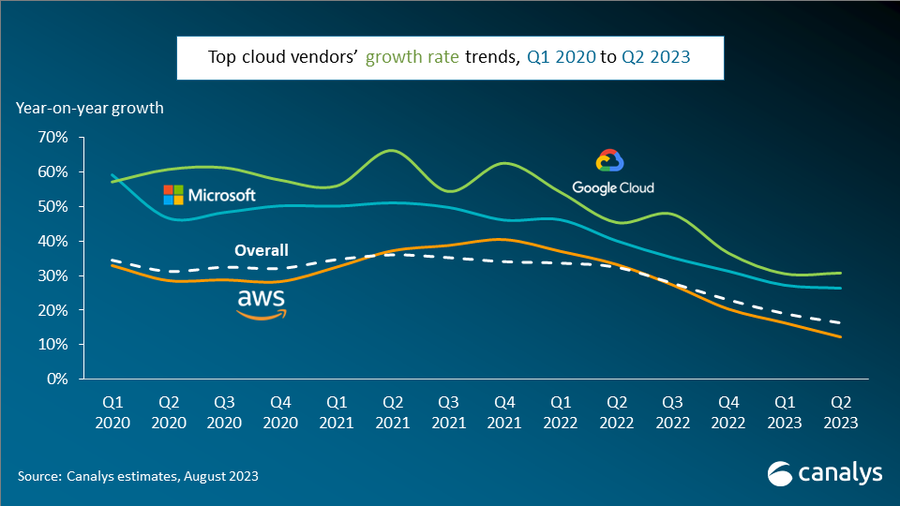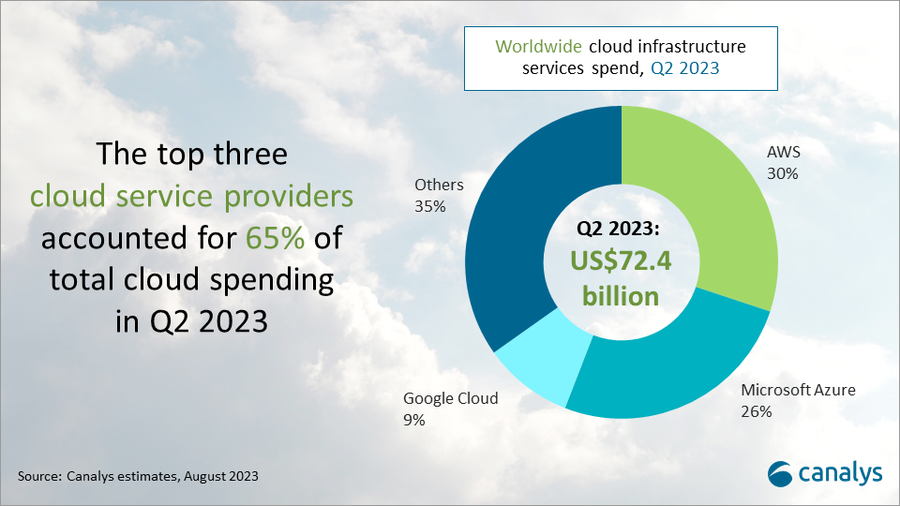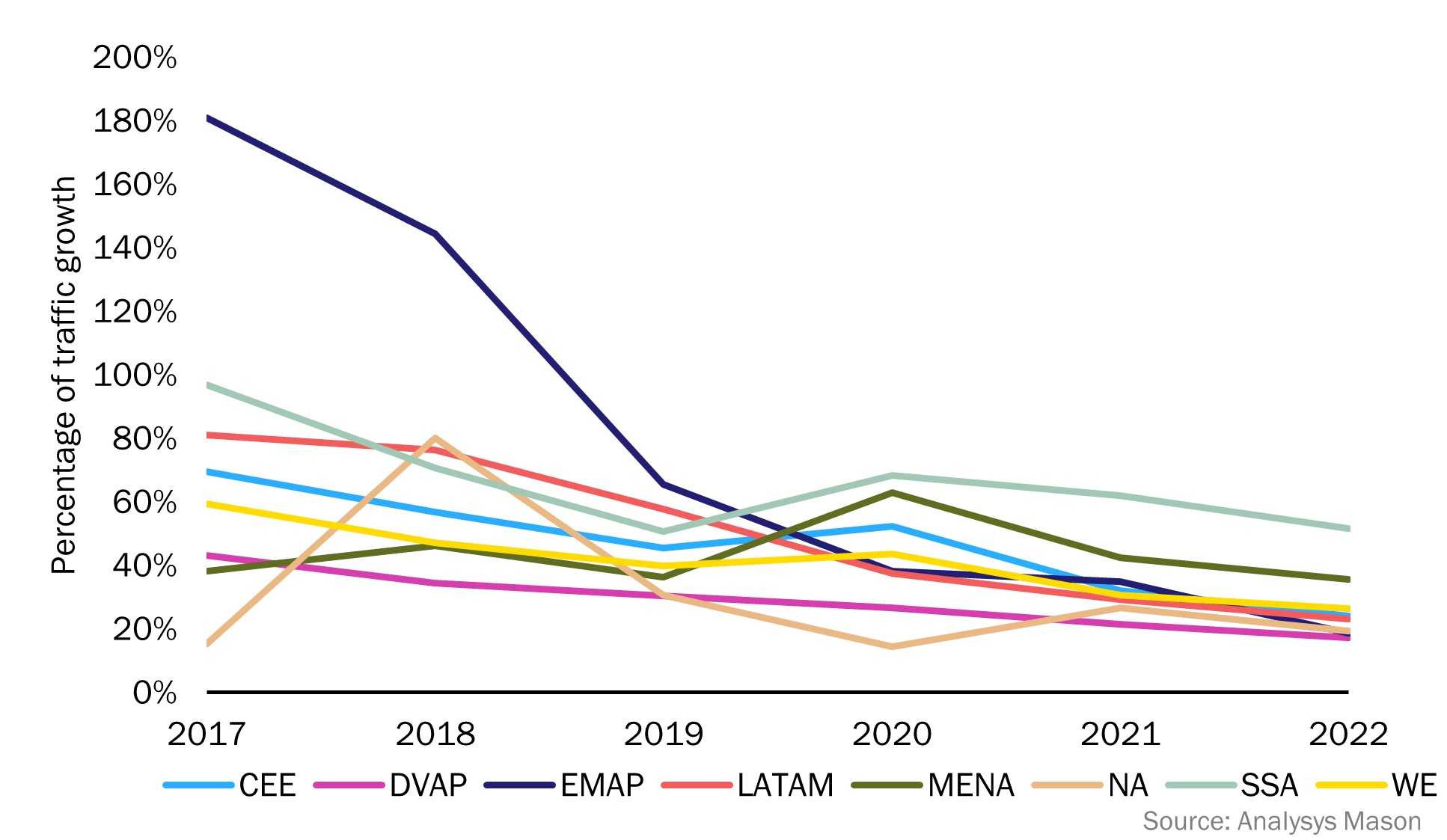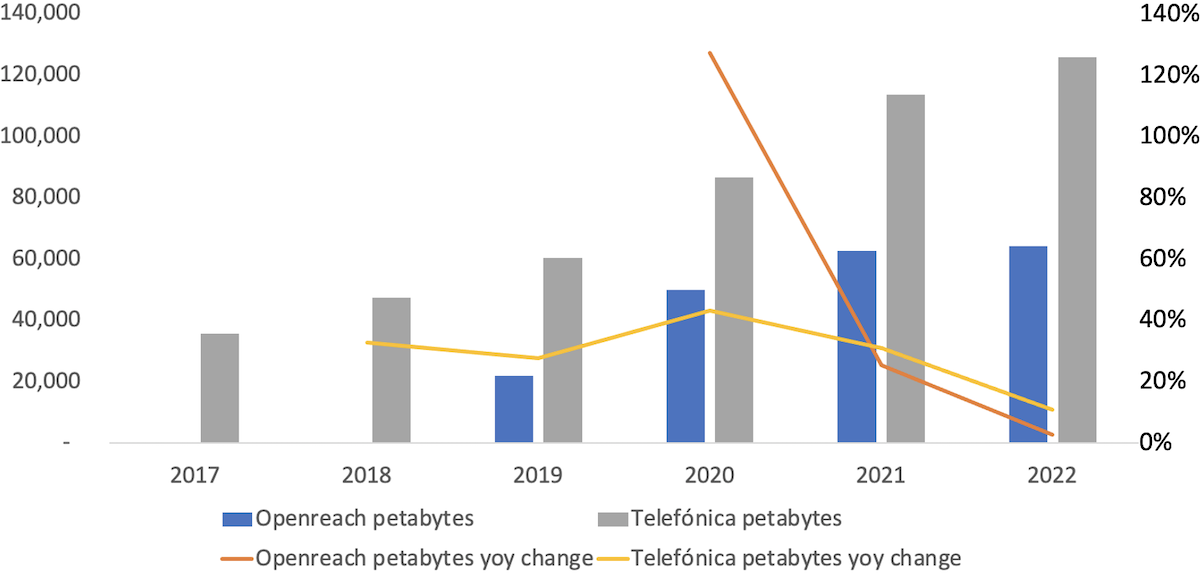Author: Alan Weissberger
BT and Ericsson wideband FDD trial over live 5G SA network in the UK
BT and Ericsson have successfully demonstrated 5G transmission using a wideband FDD (frequency division duplex) radio carrier (over 20 MHz) within a sub-3 GHz spectrum band. According to BT and Ericsson, this accomplishment is a major advancement in the progress of 5G networks, with implications that will greatly impact network capacity and performance.. The trial used existing Ericsson commercial hardware, including Baseband 6648 and Radio 4419. The software feature ‘Large Bandwidth Support Low-Band’ was activated to facilitate the testing, and Handsets powered by MediaTek Dimensity chips, specifically the MediaTek M80 Release-16 modem.

Source: BT Group
The trial was conducted on BT’s live network (EE brand name) in Bristol and Potters Bar, UK. It showcased the benefits of configuring a wide carrier bandwidth of 50 MHz (50 MHz downlink + 50 MHz uplink) within the 2.6 GHz band, along with downlink aggregation using two TDD (time division duplex) carriers in the 3.5 GHz band. This configuration led to a capacity uplift of over three times compared to a single FDD carrier. According to the joint statement, the trial also evaluated an intermediate carrier bandwidth of 30 MHz.
This result is particularly significant for the uplink in 5G Standalone (5G SA) networks. According to BT, currently, 5G SA relies on a single carrier for the uplink, but this trial demonstrates the potential to significantly boost uplink capacity using a wider carrier bandwidth. The technology partners stated that enabling 5G expansion in FDD bands is a crucial step in the rollout of EE’s 5G SA network. 5G SA is expected to offer superior experiences for consumers and businesses, meeting the increasing demand for data-driven applications like cloud gaming, virtual reality (VR), and emerging edge technologies. This achievement has the potential to enable higher capacity, improved network performance, and enhanced user experiences.
Greg McCall, Chief Networks Officer, BT Group, commented: “This breakthrough is the latest example of our commitment to maximizing the full potential of 5G for our customers. As network quality and accessibility improve, so too will innovation and the 5G services ecosystem. Demonstrating new network capabilities such as those announced today is critical to achieving this goal, and also paves the way to ensuring that 5G SA delivers new possibilities for our customers.”
Evangelia Tzifa, Chief Technology Officer, Networks & Managed Services, for Ericsson UK and Ireland said: “This is a great step forward for the deployment of 5G Standalone for EE in the UK. Ericsson innovative software capabilities such as large bandwidths for NR FDD as well as NR Carrier Aggregation enable a solid foundation for improved end user experience and network performance. This is a fundamental link for business success and the evolution to next-generation connectivity across the country.”
Dr. Ho-Chi Hwang, General Manager of Wireless Communication Systems and Partnerships at MediaTek, said: “This remarkable achievement of boosting uplink capacity is a fundamental step for the evolution from 5G Non-Standalone to 5G Standalone networks. By supporting an uplink connection in a single FDD carrier with a wider bandwidth, MediaTek Dimensity 5G chipsets already meet the surging demand for uplink data in a new era of mobile applications”.
References:
BT, Ericsson Wideband FDD Trial Showcase Breakthrough 5G SA Performance
Cloud infrastructure services market grows; AI will be a major driver of future cloud service provider investments
According to Canalys, worldwide cloud infrastructure services spending increased 16% to $72.4 billion in Q2 2023. This growth rate represents a decline against the previous quarter’s 19%, as the market feels the effect of spending pressures, though slower growth is also a consequence of the market’s greater size. In Q2 2023, the top three vendors, AWS, Microsoft Azure and Google Cloud, collectively grew 20% – down from 22% in Q1 – to account for 65% of total spending. While AWS and Microsoft both saw a deceleration in growth, Google Cloud’s growth rate remained stable compared with the previous quarter, at 31%.
The cloud infrastructure services market is feeling the impact of pressure on customer spending, the analyst firm noted, but pointed out that the slower growth is also a result of the increased size of the market.
Although AI hasn’t yet had a meaningful impact on revenues, there is plenty of cause for optimism. Canalys says AI represents a major driver of cloud investment in the future, and all the major cloud vendors continue to invest heavily in AI technologies. However, cloud service providers will have to be selective when deciding who to partner with in this market.

In the current business landscape, where emphasis is placed on cost control, cloud vendors must secure a significant influx of new customers and workloads to drive revenue growth. The emergence of AI technology is introducing new cloud workloads and is set to fuel massive demand for computing capacity, creating new opportunities for cloud growth. Notably in this quarter, both AWS and Microsoft launched new AI-oriented partner programs, recognizing the importance of collaborating with partners to drive customers’ use of their AI products.
“The most common collaboration model involves partners contributing their industry expertise, business process knowledge and data analytics experience within relationships,” said Yi Zhang, Research Analyst at Canalys. “Cloud providers, in turn, offer partners early exposure to their emerging technologies and provide technical support.”
“In the meantime, vendors need to separate the wheat from the chaff when it comes to driving their AI strategies through partners,” said Alex Smith, VP at Canalys. “That means focusing on partners that are building service practices around AI, engaging in sales and marketing initiatives that focus on AI, producing original thought leadership and compelling case studies around AI applications, and selling solutions that are embedded with AI capabilities. It’s these partners that will assume a leading role in steering companies toward being leaders in this field.”

Amazon Web Services (AWS) continued to lead the cloud infrastructure services market in Q2 2023, accounting for 30% of total spend, an increase of 12% year on year. AWS’s growth has more than halved since the same period last year. In the face of subdued revenue growth, AWS is actively increasing its investments in AI. It invested US$100 million in a new generative AI program, which was launched in June 2023. As part of the program, the AWS Generative AI Innovation Center will serve as a hub for free workshops and training and is expected to help enterprises accelerate the development of generative AI-based applications while connecting AWS’ technology with customers and partners. Recent announcements from AWS reveal that thousands of customers are engaging with its new AI service and, concurrently, AWS has established new partnerships with Omnicom and 3M Health Information Systems.
Microsoft Azure accounted for 26% of the market after growing 26% annually, positioning it as the second-largest cloud service provider in Q2 2023. Business performance is expected to remain steady, given the 19% increase in its cloud order backlog, which reached US$224 billion in Q2 2023. It has seen significant momentum in its Azure OpenAI Service, winning noteworthy clients including Ikea, Volvo Group and Zurich Insurance. In light of the projected surge in AI demand, it introduced the Microsoft AI Cloud Partner Program during its global partner event, Microsoft Inspire 2023. This aims to encourage Microsoft’s partner ecosystem to develop solutions that use Microsoft’s AI technology. Microsoft aims to ensure a smooth transition for its existing partners, automatically enrolling them in the new program while retaining their previous benefits and designations.
Google Cloud grew 31% year on year in Q2 2023, the strongest growth of the top three hyperscalers, to capture 9% of the cloud market. Its approach to extending the depreciation period for servers and network equipment helped control operating costs and bolstered Google Cloud’s profitability. Google Cloud’s partner ecosystem continues to provide support in the development of its generative AI applications. Hundreds of ISVs and SaaS providers, including Box, Salesforce and Snorkel, along with GSIs, have committed to training over 150,000 individuals on Google Cloud’s Generative AI. Google Cloud claims to command the allegiance of over 70% of burgeoning tech startups that specialize in generative AI. This roster features standout names such as Cohere, Jasper and Typeface, exemplifying the trust startups place in Google Cloud’s AI capabilities.
Canalys defines cloud infrastructure services as those services that provide infrastructure-as-a-service and platform-as-a-service, either on dedicated hosted private infrastructure or shared public infrastructure. This excludes software-as-a-service expenditure directly but includes revenue generated from the infrastructure services being consumed to host and operate them.
For more information, please contact:
Alex Smith: [email protected]
Yi Zhang: [email protected]
References:
https://canalys.com/newsroom/global-cloud-services-q2-2023
Canalys: Cloud marketplace sales to be > $45 billion by 2025
Global Cloud VPN Market Report: Rising Demand for Cloud-based Security Services
Synergy & IDC: Hosted and Cloud Services are driving the Unified Communications & Collaboration Markets
Forbes: Cloud is a huge challenge for enterprise networks; AI adds complexity
IDC: Cloud Infrastructure Spending +13.5% YoY in 4Q-2021 to $21.1 billion; Forecast CAGR of 12.6% from 2021-2026
Strong growth for global cloud infrastructure spending by hyperscalers and enterprise customers
Globe Telecom, HPE to deploy 5G SA network in the Philippines
Globe Telecom in the Philippines has partnered with Hewlett Packard Enterprise (HPE) to roll out the first Private 5G Standalone (5G SA) network in the Philippines. According to Globe, this network introduces a new era of connectivity options for businesses, elevating cellular connectivity to unprecedented levels.
“The breakthrough private 5G standalone betwork brings us closer to a digitally transformed enterprise landscape,” said Yoke Kong Seow, chief technical advisor at Globe.
“5G offers a lot of surprising use cases. Exploring it and doing customer pilot deployment will bring meaningful results and opportunities. This successful demonstration of the first Private 5G SA Network heralds another innovation for our enterprise customers to experience,” he said.
The partnership with HPE offers flexibility in building the Private 5G network. Enterprises can choose to host the solution in the cloud, acquire a complete solution including HPE edge servers and Athonet software, or just license the software to integrate into existing infrastructure.
“With our Athonet technology, we are enabling a new era of connectivity for businesses,” said Loh Khai Peng, vice president for APAC sales at HPE. “HPE is proud to partner with Globe on this groundbreaking endeavor, providing solutions that are not only tailored for specific needs but are also scalable, secure, and highly reliable,” he said.
Built with technology from Athonet, a subsidiary of HPE, the network will deliver cellular connectivity to enterprises and organizations across the Philippines as an alternative or complementary solution to Wi-Fi and public mobile technologies.
Globe said, the Athonet 5G SA Starter Kit is a complete package with SIM cards, a radio, and a mobile core network, all housed within a convenient briefcase. This plug-and-play Private 5G SA Network offers features, including high-quality video and audio streaming, as well as lightning-fast download speeds of up to 780 Mbps and upload speeds of up to 150 Mbps.
Moreover, the kit operates as a stand-alone network, making it an ideal solution for businesses seeking reliable cellular connectivity. Additionally, this Private 5G SA Network works seamlessly with business applications via its N6 interface.
Private 5G SA networks offer improved security, customizable options, low latency, and high capacity. These networks excel at handling large-scale IoT deployments, especially for mission-critical operations.
According to Globe, the collaboration with HPE offers flexible Private 5G network solutions, including cloud-based options, edge servers with Athonet software, and customizable choices for scalability.
Globe’s Private 5G SA Network will redefine the future of businesses in the Philippines with increased productivity, cost-efficiency, and improved quality.
References:
Globe Telecom, HPE to roll out 5G SA network in the Philippines
Globe to Deploy Philippines’ First Private 5G Network With HPE
BroadbandNow Research: Best & Worst States for Broadband Access
A recent study by BroadbandNow Research has assessed the best and worst states in the U.S. for broadband internet access in 2023. The study evaluated each state and the District of Columbia based on various factors such as access to wired or fixed wireless broadband, access to low-priced broadband, median download speed, and median upload speed.
Key Findings:
- Availability of low-priced broadband has increased across the U.S. There is now only 1 state with less than 20% of the population having access to a broadband plan for $60 per month or less (down from 25 states last year). Having said that, in only one state, Wyoming, more than half of residents have access to such a plan.
- Latency (round trip time) is a measure of responsiveness–the time between when you click something and when you get a response–and it’s critical for a smooth internet experience, especially for real-time interactions such as gaming or video calls. There is a huge geographic disparity between states that do well in this metric, like New York or Washington with median round trip times less than 7.5 milliseconds, and states that do poorly, like Hawai’i and Massachusetts with median round trip times greater than 61 milliseconds.
- Delaware is the best state for broadband internet, with 46.2% of its population having access to low-priced broadband and a median download speed of 96.1 Mbps. On the other hand, Alaska ranked at the bottom of the list, with only 20% of its population having access to affordable broadband and a median download speed of 58.5 Mbps.
- We support changing the definition of broadband speeds from 25Mbps down and 3Mbps up to 100Mbps down and 25Mbps up, but we’re a long way away from widespread access to those speeds. Nationally, only 39% of Americans are getting 100Mbps down, and only 25% are getting 25Mbps up.

10 Best States for Broadband
10 Worst States for Broadband
According to the study, there is only one state, Nevada, with less than 20% of its population having access to a broadband plan for $60 per month or less. This is a significant drop from the 25 states that had such limited access last year.
In the Tri-State area, Illinois secured the 14th spot with 95.7% of its residents having access to wired or fixed wireless broadband. Additionally, 31.4% of the population had access to low-priced broadband. Illinois also boasted a median download speed of 85.3 Mbps, surpassing the national median.
Indiana ranked 23rd overall, with an impressive download speed of 85.7 Mbps. 31.4% of its population also had access to low-priced broadband. However, the state fell short in terms of overall broadband access, with only 92.8% of residents having access to wired or fixed wireless broadband.
Kentucky landed at the 36th spot, with a mere 25% of its population having access to affordable broadband. In an effort to improve access, Governor Andy Beshear, Senator Mitch McConnell, and other lawmakers secured over $1 billion in funding for broadband access in June, marking the largest public investment in high-speed internet in the state’s history.
References:
GAO: U.S. Broadband Benchmark Speeds Too Slow; FCC Should Analyze Small Business Speed Needs
FCC proposes 100 Mbps download as U.S. minimum broadband speed
Analysys Mason & Light Reading: cellular data traffic growth rates are decreasing
According to Analysys Mason, the telecoms industry is fixated on the idea of a constant and dramatic increase in data consumption by cellular network users. However, the growth rates are no longer increasing. The annual growth in cellular data traffic slowed, worldwide, from more than 90% in 2018 to 34% in 2021 and again to around 22% in 2022.
These figures include a surge in cellular data traffic generated by customers with fixed–wireless access (FWA) services. FWA customers (due to time spent watching TV and video streaming) often generated more than 200–500GB per month which is 16 times more than an average mobile cellular data customer, in 2022.
This means there is an even steeper decline in the growth of data traffic generated by mobile handsets, decreasing from an annual rate of 104% in 2018 to 21% in 2022.
Figure 1: Cellular data traffic growth rates by region, 2017–2022

CEE = Central and Eastern Europe, DVAP = Developed Asia–Pacific, EMAP = Emerging Asia–Pacific, LATAM = Latin America, MENA = Middle East and North Africa, NA =North America, SSA = Sub-Saharan Africa, WE = Western Europe
……………………………………………………………………………………………………………
From Light Reading:
- Data traffic on Openreach, the UK’s main broadband network, grew just 3% last year after rising 25% in 2021 and 127% in 2020 (the year of mass pandemic induced lockdowns).
- A similar trend is observable across the various fixed and mobile networks operated by Spain’s Telefónica. Traffic surged 43% in 2020, but the rate of increase dipped to 11% last year. If the trend persists, the petabytes will soon be dropping.

……………………………………………………………………………………………………………………………….
5G was expected to propel cellular data usage onto a new growth trajectory. However, this is not taking place at all.
Following the launch of 5G services, operators reported very high initial 5G data usage rates. This was primarily caused by the heaviest LTE users upgrading to 5G handsets and services. This migration simultaneously caused a decline in the average traffic generated by users with LTE handsets. The impact of the early adopters was subsequently diluted as less-intensive users upgrade to 5G handsets and services. Then, organic growth in usage started to mask some of the effects of the migration. Over time, though, we can look at whether the total growth in usage across all handset types is sustained. South Korea is a good example to look to. In South Korea, there was an initial surge in data usage the year 5G was introduced, but this effect was short-lived. Average data use by subscribers with 5G handsets fell from its high starting point, became flat and then started to rise once more but only at a low single-digit rate. Average usage by LTE handset owners has been steadily decreasing. Overall, average data traffic growth across all handset types has slowed for 3 years in a row.
Figure 2: Cellular network data traffic growth, South Korea, December 2018–December 2022
| Monthly usage (MB) | December 2018 | December 2019 | December 2020 | December 2021 | December 2022 |
| 4G smartphone traffic per subscriber | 8177 | 9753 | 9650 | 8619 | 7591 |
| 5G smartphone traffic per subscriber | 27 282 | 26 744 | 26 834 | 27 589 | |
| 4G smartphone usage growth | 21% | 19% | –1% | –11% | –12% |
| 5G smartphone usage growth | –2% | 0% | 3% | ||
| Average growth (2G, 3G, 4G and 5G handsets) | 23% | 38% | 18% | 15% | 10% |
Source: Analysys Mason
Operators are currently using FWA to fill the gap between capacity and demand in their 5G networks, but the revenue per megabyte that they generate from FWA services is much lower than that for mobile cellular data services. Relying on FWA traffic to fill 5G networks will not satisfy mobile operators’ investors in the long run. Some operators will also need to limit FWA availability because without the careful management of FWA traffic on 5G networks, there could be negative impacts on the quality of service for non-FWA users.
Only new applications and services will unlock future annual growth rates of 30% or more. However, it is unlikely that the types of services that could significantly accelerate cellular data traffic growth will have a substantial near-term impact.
- Higher definition video and TV services could potentially drive a new wave of data usage. Device capability is an obstacle to this possibility, as most mobile handsets are either not capable of displaying high-definition content or the screen size is too small for users to see the difference. A surge in the use of tablets to view TV on mobile networks could change this – although tablet users tend to use Wi-Fi as their primary means of connectivity. A few mobile operators have introduced mobile cellular data packages that include subscriptions to on-demand TV. This has the potential to drive up data traffic, but there are limits to the amount of time people can spend watching TV when they are away from their homes. Lack of time is likely to prevent excessive mobile TV consumption away from the home. Within the home – even when they have unlimited mobile data packages – users don’t tend to switch to their mobile networks. They typically continue to use devices connected to their home fixed broadband and Wi-Fi for extended TV viewing.
- Connected cars have been regarded as a potential source of high-volume data traffic. But this will likely not happen soon. Most new cars equipped with a mobile connection still only have LTE capabilities, and most of those are only used for telematics. Some original equipment manufacturers (OEMs), as well as operators, have introduced service packages to encourage in-car use of services (based on embedded and aftermarket connections). Even still, usage volumes have been low even in luxury vehicles. Other potential drivers of traffic are C-V2X systems for intelligent transport networks and autonomous vehicles. But despite numerous tests and trials, C-V2X infrastructures are years away, and fully autonomous vehicles still have technical and regulatory hurdles to overcome before they are deployed in meaningful numbers.
- Metaverse services – including AR and VR, and services using haptics – have the potential to generate a high volume of data traffic. In the next 4 or 5 years, the number of users with AR and VR headsets is expected to reach 300–400 million , but faster take-up will be restricted by the cost of end-user equipment, and most image processing will be done using equipment within the home. Eventually, metaverse use cases could involve vast numbers of customers, with cloud processing of fully immersive environments and services requiring very low latency and very high bandwidth.
- However, most of the usage will take place indoors where a combination of fibre and Wi-Fi seems much more suited to the service requirements.
The volume of cellular data traffic is increasing in absolute terms, but the annual change measured in percentage terms is going to be much lower than what is has been historically. Analysys Mason’s new report Wireless network data traffic: worldwide trends and forecasts 2022–2028 evaluates the prospects for cellular data growth over the coming 5 years, with global cellular data traffic nearly tripling worldwide to 2.7ZB in 2028, with a limited metaverse uptick at the end of the period.
References:
https://www.analysysmason.com/research/content/articles/cellular-data-traffic-rdnt0/
Highlights of FCC Notice of Inquiry (NOI) on radio spectrum usage & how AI might be used
The U.S. Federal Communications Commission (FCC) is requesting input from the public on new technological approaches to assessing “real-time, non-Federal (government) spectrum usage, so that it has better insights into current technologies that might help the agency to manage spectrum and identify opportunities for spectrum sharing—including how artificial intelligence (AI) might be used.
This FCC Notice of Inquiry (NOI) was approved by all four members of the Commission. It states:
“Spectrum usage information is generally non-public and made available infrequently. As the radiofrequency (RF) environment grows more congested, however, we anticipate a greater need to consider such data to improve spectrum management. That is especially true as the burgeoning growth of machine learning (ML) and artificial intelligence (AI) offer revolutionary insights into large and complex datasets. Leveraging today’s tools to understand tomorrow’s commercial spectrum usage can help identify new opportunities to facilitate more efficient spectrum use, including
new spectrum sharing techniques and approaches to enable co-existence among users and services.”
Spectrum usage has been defined in various ways. In one technical paper, for instance, NTIA and NIST defined “band occupancy” as “the percentage of frequencies or channels in the band with a detected signal level that exceeds a default or user-defined threshold.”

“Right now, so many of our commercial spectrum bands are growing crowded,” said FCC Chairwoman Jessica Rosenworcel. “Hundreds of millions of wireless connections—from smartphones to medical sensors—are using this invisible infrastructure. And that number is growing fast. But congestion can make it harder to make room in our skies for new technologies and new services. Yet we have to find a way, because no one wants innovation to grind to a halt. To do this we need smarter policies, like efforts that facilitate more efficient use of this scarce resource. … Now enter AI. A large wireless provider’s network can generate several million performance measurements every minute. Using those measurements, machine learning can provide insights that help better understand network usage, support greater spectrum efficiency, and improve resiliency by making it possible to heal networks on their own.”
“[This] inquiry is a way to understand this kind of potential and help ensure it develops here in the United States first. “I believe we can do more to increase our understanding of spectrum utilization and support the development of AI tools in wireless networks,” she added.
Rosenworcel noted that some pioneering work on dynamic, cognitive radios was kick-started with the Defense Advanced Research Project’s three-year Spectrum Collaboration Challenge, which sought to develop software-defined radios’ capability to dynamically detect other spectrum users and work around them in a congested radio frequency environment.
The FCC pointed out in a statement that it generally doesn’t collect information on spectrum usage, and instead relies on intermittent data from third-party sources.
“As the radiofrequency environment becomes more congested, leveraging technologies such as artificial intelligence to understand spectrum usage and draw insights from large and complex datasets can help facilitate more efficient spectrum use, including new spectrum sharing techniques and approaches to enable co-existence among users and services,” the agency said, adding that the inquiry will explore the “feasibility, benefits, and limitations” of various ways to understand non-federal spectrum usage, as well as band- or service-specific considerations and various technical, practical or legal aspects that should be considered.
References:
https://www.fcc.gov/document/spectrum-usage-noi
https://docs.fcc.gov/public/attachments/FCC-23-63A1.pdf
Saudi Arabia’s Stc Achieves 10 Gbps Speeds in 5G mmWave Trials
Saudi Arabia’s Stc (Saudi Telecom Company) Group announced the successful completion of the first live trials of advanced 5G technology in the Middle East and North Africa. The trials demonstrated speeds exceeding 10 Gbps using Millimeter Wave (mmWave) technology. The trials are an extension of the robust infrastructure of the advanced 5.5G network in the Kingdom
According to the company, these trials complement the existing advanced 5.5G network in the kingdom, enabling data transfer at new record speeds in a live working environment.
“This achievement signifies a new stage in facilitating digital transformation in the region and places the Kingdom of Saudi Arabia at the forefront of advanced nations in the field of telecommunications.”

The Kingdom’s residents can now anticipate faster and more efficient data connectivity than before. The company said that the success of these trials is an essential aspect of stc’s “Dare” strategy. The goal is to offer access to new services and enhance customer experiences to new heights, aligned with the Saudi Vision 2030 and supporting digital transformation in the region.
The latest progress in advanced 5G technology puts Saudi Arabia at the forefront of technological innovation in the region, paving the way for even more advancements. By adopting this technology, the country is preparing itself for upcoming developments and the digital age.
References:
Inside AT&T’s newly expanded $8 billion cost-reduction program and huge layoffs
As its stock price (“T”) trades at 30+ year lows, AT&T is under severe pressure to cut costs. Its wireless subscriber growth is slowing, new fiber take rates are lower, debt has increased by $6 billion to $143.3 billion, while the company faces a potentially costly ($B+) lead cable cleanup.
AT&T recently announced they will cut another $2 billion in expenses over the next three years, even after reaching a $6 billion cost reduction plan early. Largely through what AT&T called “surplussings,” rounds of layoffs have been conducted on a department level on nearly a monthly basis to reduce costs.
The Dallas-based company’s employment has shrunk this decade from a peak of 281,000 to less than 160,000 through the first half of this year. Since the beginning of 2021, AT&T has cut 74,130 employees, including through divestitures, or 32% of its total staff through June 30th.
The company added fewer customers than analysts’ expected in the second quarter of 2023. In the three months ended June 30th, AT&T added 326,000 mobile phone subscribers. AT&T has been offering free phones in order to fuel customer growth for several quarters. The appeal of those promotions may be wearing out. The company cautioned last month that the pace of subscriber gains had slowed due to competition from rivals and cable TV companies.
AT&T raised rates on its premium mobile plan to help boost revenue and is in the process of restructuring operations by reducing 350 offices across the U.S. to nine core locations with the main hubs in Dallas and Atlanta. The telco has told 60,000 managers that they need to show up in person to one of these locations, and some will face relocation decisions or be fired.

Chief executive John Stankey recently informed employees in an email about the departure of HR chief Angela Santone. She is one of only three female top executives at AT&T. During her tenure, Santone developed an internal “culture of connection” program. The idea was to echo one of Stankey’s themes of “connectivity,” the new simplified mission for the company as it returned to its telecommunications roots after a $100 billion ill-fated attempt to transform the company into a media rival of Walt Disney Co. and Netflix Inc.
“On behalf of AT&T’s leadership, I’d like to thank her for her support and commitment to driving these initiatives during a very challenging and important time of transition,” Stankey wrote in the email, which was confirmed by Bloomberg. AT&T declined to comment on Santone’s departure.
……………………………………………………………………………………………………………………
Cloud Service Providers struggle with Generative AI; Users face vendor lock-in; “The hype is here, the revenue is not”
Everyone agrees that Generative AI has great promise and potential. Martin Casado of Andreessen Horowitz recently wrote in the Wall Street Journal that the technology has “finally become transformative:”
“Generative AI can bring real economic benefits to large industries with established and expensive workloads. Large language models could save costs by performing tasks such as summarizing discovery documents without replacing attorneys, to take one example. And there are plenty of similar jobs spread across fields like medicine, computer programming, design and entertainment….. This all means opportunity for the new class of generative AI startups to evolve along with users, while incumbents focus on applying the technology to their existing cash-cow business lines.”
A new investment wave caused by generative AI is starting to loom among cloud service providers, raising questions about whether Big Tech’s spending cutbacks and layoffs will prove to be short lived. Pressed to say when they would see a revenue lift from AI, the big U.S. cloud companies (Microsoft, Alphabet/Google, Meta/FB and Amazon) all referred to existing services that rely heavily on investments made in the past. These range from the AWS’s machine learning services for cloud customers to AI-enhanced tools that Google and Meta offer to their advertising customers.
Microsoft offered only a cautious prediction of when AI would result in higher revenue. Amy Hood, chief financial officer, told investors during an earnings call last week that the revenue impact would be “gradual,” as the features are launched and start to catch on with customers. The caution failed to match high expectations ahead of the company’s earnings, wiping 7% off its stock price (MSFT ticker symbol) over the following week.
When it comes to the newer generative AI wave, predictions were few and far between. Amazon CEO Andy Jassy said on Thursday that the technology was in its “very early stages” and that the industry was only “a few steps into a marathon”. Many customers of Amazon’s cloud arm, AWS, see the technology as transformative, Jassy noted that “most companies are still figuring out how they want to approach it, they are figuring out how to train models.” He insisted that every part of Amazon’s business was working on generative AI initiatives and the technology was “going to be at the heart of what we do.”

There are a number of large language models that power generative AI, and many of the AI companies that make them have forged partnerships with big cloud service providers. As business technology leaders make their picks among them, they are weighing the risks and benefits of using one cloud provider’s AI ecosystem. They say it is an important decision that could have long-term consequences, including how much they spend and whether they are willing to sink deeper into one cloud provider’s set of software, tools, and services.
To date, AI large language model makers like OpenAI, Anthropic, and Cohere have led the charge in developing proprietary large language models that companies are using to boost efficiency in areas like accounting and writing code, or adding to their own products with tools like custom chatbots. Partnerships between model makers and major cloud companies include OpenAI and Microsoft Azure, Anthropic and Cohere with Google Cloud, and the machine-learning startup Hugging Face with Amazon Web Services. Databricks, a data storage and management company, agreed to buy the generative AI startup MosaicML in June.
If a company chooses a single AI ecosystem, it could risk “vendor lock-in” within that provider’s platform and set of services, said Ram Chakravarti, chief technology officer of Houston-based BMC Software. This paradigm is a recurring one, where a business’s IT system, software and data all sit within one digital platform, and it could become more pronounced as companies look for help in using generative AI. Companies say the problem with vendor lock-in, especially among cloud providers, is that they have difficulty moving their data to other platforms, lose negotiating power with other vendors, and must rely on one provider to keep its services online and secure.
Cloud providers, partly in response to complaints of lock-in, now offer tools to help customers move data between their own and competitors’ platforms. Businesses have increasingly signed up with more than one cloud provider to reduce their reliance on any single vendor. That is the strategy companies could end up taking with generative AI, where by using a “multiple generative AI approach,” they can avoid getting too entrenched in a particular platform. To be sure, many chief information officers have said they willingly accept such risks for the convenience, and potentially lower cost, of working with a single technology vendor or cloud provider.
A significant challenge in incorporating generative AI is that the technology is changing so quickly, analysts have said, forcing CIOs to not only keep up with the pace of innovation, but also sift through potential data privacy and cybersecurity risks.
A company using its cloud provider’s premade tools and services, plus guardrails for protecting company data and reducing inaccurate outputs, can more quickly implement generative AI off-the-shelf, said Adnan Masood, chief AI architect at digital technology and IT services firm UST. “It has privacy, it has security, it has all the compliance elements in there. At that point, people don’t really have to worry so much about the logistics of things, but rather are focused on utilizing the model.”
For other companies, it is a conservative approach to use generative AI with a large cloud platform they already trust to hold sensitive company data, said Jon Turow, a partner at Madrona Venture Group. “It’s a very natural start to a conversation to say, ‘Hey, would you also like to apply AI inside my four walls?’”
End Quotes:
“Right now, the evidence is a little bit scarce about what the effect on revenue will be across the tech industry,” said James Tierney of Alliance Bernstein.
Brent Thill, an analyst at Jefferies, summed up the mood among investors: “The hype is here, the revenue is not. Behind the scenes, the whole industry is scrambling to figure out the business model [for generative AI]: how are we going to price it? How are we going to sell it?”
………………………………………………………………………………………………………………
References:
https://www.ft.com/content/56706c31-e760-44e1-a507-2c8175a170e8
https://www.wsj.com/articles/companies-weigh-growing-power-of-cloud-providers-amid-ai-boom-478c454a
https://www.techtarget.com/searchenterpriseai/definition/generative-AI?Offer=abt_pubpro_AI-Insider
Global Telco AI Alliance to progress generative AI for telcos
Curmudgeon/Sperandeo: Impact of Generative AI on Jobs and Workers
Bain & Co, McKinsey & Co, AWS suggest how telcos can use and adapt Generative AI
Generative AI Unicorns Rule the Startup Roost; OpenAI in the Spotlight
Generative AI in telecom; ChatGPT as a manager? ChatGPT vs Google Search
Generative AI could put telecom jobs in jeopardy; compelling AI in telecom use cases
Qualcomm CEO: AI will become pervasive, at the edge, and run on Snapdragon SoC devices
MTN Consulting’s Network Operator Forecast Through 2027: “Telecom is essentially a zero-growth industry”
MTN Consulting’s Mid Year Update:
There are three different types of network operators: telecom operators (telcos), webscale network operators (webscalers), and carrier-neutral operators (CNNOs). In 2022, these three groups accounted for $4.1 trillion (T) in revenues, $559 billion (B) in capex, and 8.87 million employees. The report provides 2011-22 actuals and projections through 2027, and includes projections from past forecasts for reference.
Review of the 3 Market Segments:
1. Telco: Telecom is essentially a zero-growth industry. Specific countries and companies do grow from time to time, in part from market share shifts, the different timing of growth cycles, or M&A. But global telco revenues have hovered in a narrow range ($1.7-$1.9 trillion) since 2011, and this will likely remain true through 2027. In 2022, revenues were $1.78T, and will grow an average annual rate of 1.8% to reach $1.95T by 2027.
Capex continues to vary with technology upgrade cycles (e.g. 5G) and government actions (e.g. newly issued spectrum, or rural fiber subsidies). In 2022, capex totaled $322B, or 18.1% of revenues; that’s an all-time high capital intensity, for coverage timeframe (2011-present). Capex will decline slightly through 2025, though, and then rise modestly again to reach $321B in 2027, which would be a 16.5% capital intensity. US capex surged in 2022, but will drop dramatically in 2023; we already expected this, though, so the current forecast is not significantly different. Software capex is growing more slowly than expected, and now likely to remain under 20% of total capex for the forecast period.
Headcount in telecom is declining faster than expected, and now likely to fall below 4.2 million in 2027, from just under 4.6 million in 2022. Labor costs per head will revert to a growth trajectory in 2023, as telcos develop a more IT/software-centric workforce.
2. Webscalers: growth from webscale has lifted the overall network operator market over the last decade. Webscalers surged during COVID, by all measures – revenues, capex, employment. Demand for data center chips and related gear also surged. Now, parts of the sector are cutting back slightly.
In 2022, revenues were $2.23 trillion, up just 4% YoY, far less than the average growth of 12% per year from 2011-22. We expect revenues to grow at a ~6% CAGR through 2027. Webscale capex was $203B in 2022, a healthy increase from 2021; due in part to generative AI interest, capex will grow again in 2023 and 2024, dip for a couple years of capacity absorption, and then end 2027 at around $231B. A larger portion of this capex will be for Network/IT/software investments: around 46%, from 44% in 2022. R&D spending by webscalers will remain high but fall from the record-breaking level of 2022 (12.0% of revenues), to about 10% in 2027. As topline growth gets harder for webscalers, they will become more cost conscious and short-term oriented.
3. CNNOs: the carrier-neutral sector remains tiny, with just $95B in 2022 revenues, but will grow to about $132B by 2027. Webscalers and telcos alike will both rely more on CNNOs over time for expansion of their data center, tower and fiber footprints.
Telcos will continue to spin out portions of their infrastructure to third-parties – both traditional CNNOs, and joint ventures like Gigapower, the AT&T-Blackrock partnership. Total CNNO capex for 2022 was $34B, and will grow to about $45B by 2027; a large chunk of the CNNO sector’s expansion will be inorganic, though, via acquisition of existing assets from other sectors. By 2027, the CNNO sector will have under its management approximately 3.7 million cell towers (2022: 3.3M), 1,607 data centers (2022: 1,224), and 1.1M route miles of fiber (2022: 960K).
Source: MTN Consulting
……………………………………………………………………………………………………………………………………………………………
Market drivers, constraints and risk factors:
This forecast represents only a modest revision from the edition published in December 2022. Most of the realities facing the operator market today were anticipated by our last forecast. For instance, we already expected that service revenues were not growing for telcos, and that 5G device sales distorted the market; an MTN Consulting report published in 2Q23 confirmed this fact, and supports a more cautious outlook for telco spending. We also thought that open RAN was overhyped, and was not likely to change the capex calculus for most established mobile operators. The 2023 dip in US telco capex was baked into our old forecast. The one big sector-specific change from the last forecast to this one is, the recent spike in interest in generative AI. This is a plus for the webscale market’s capex outlook, even if new revenue models are unclear and government regulations will slow adoption.
What about the macroeconomic climate? Wars, economic growth, inflation, interest rates, climate change, etc. Russia’s war on Ukraine remains ongoing, but hasn’t expanded to new countries. China has not invaded Taiwan as of yet, although this is a serious risk over the 5-year forecast horizon. Global economic growth is weaker than historic averages – about 3% this year and next, per the IMF – but inflation is easing, and the IMF’s GDP growth outlook improved slightly from April to July 2023. Interest rates continue to rise; the US federal funds rate has risen from 3.83% to 5.08% between 12/22 and 7/23, and further increases seem likely. Rising interest rates were already assumed to modestly depress 2023-24 capex, though.
Climate change is the one macro area that is quite a bit different than 8 months ago. The news gets worse each week. Government action continues to be gradual and consensus is hard to achieve. Increasingly the pressure will be on private companies to make voluntary, verifiable changes in how they operate. This doesn’t impact the forecast directly, but will impact how operators spend their tech budgets, as we have discussed in separate reports. Energy, sustainability and climate change will continue to be key themes in MTN Consulting research.
References:




